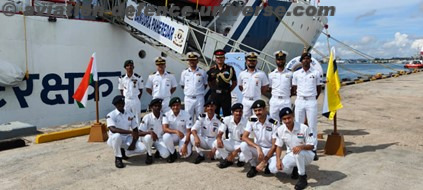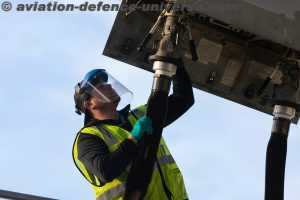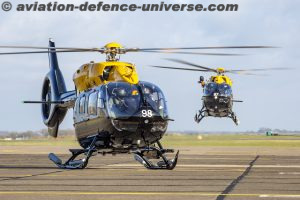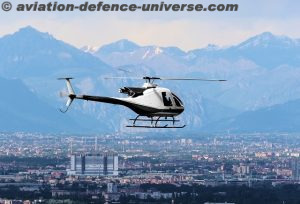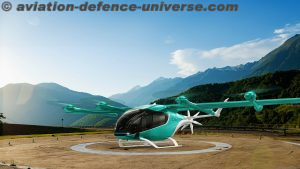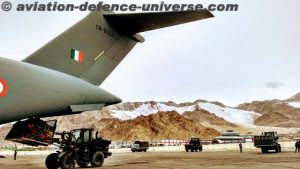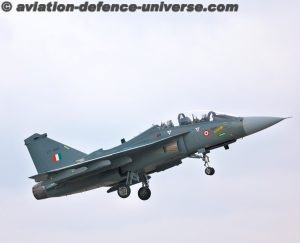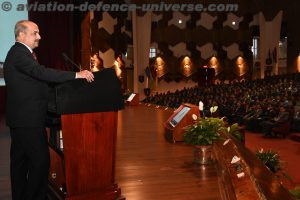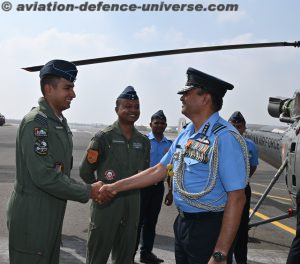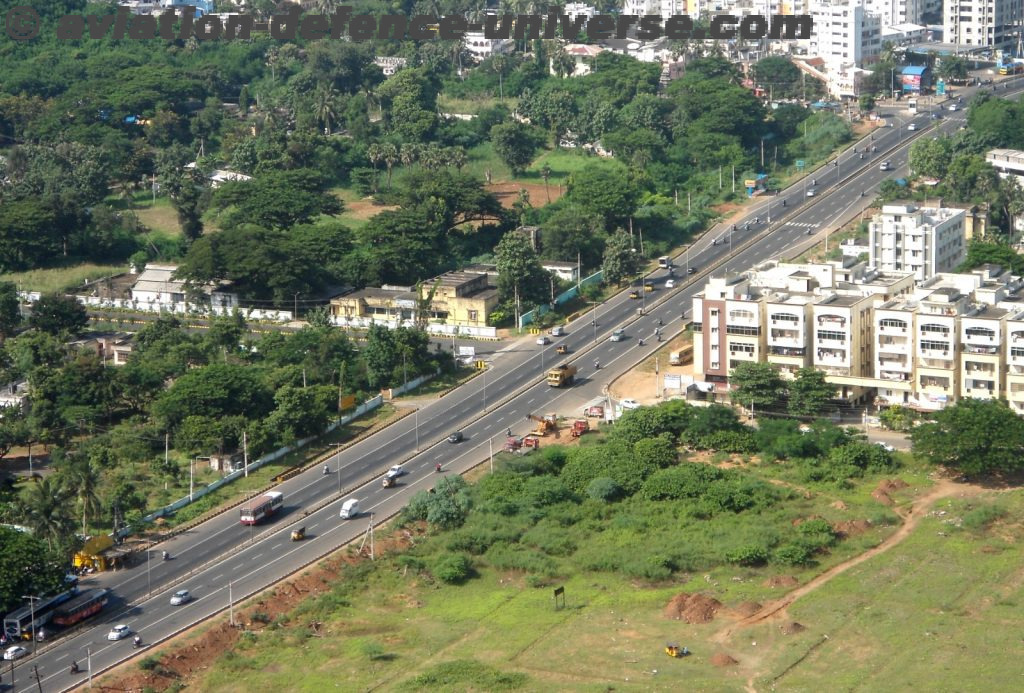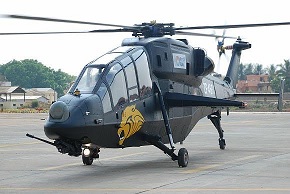 BY Lt Gen BS Pawar(Retd).
BY Lt Gen BS Pawar(Retd).
New Delhi. 06 October 2016. The operational diversities of the Indian Armed Forces coupled with extremity and variety of terrain (from sea level to high altitude) underline the need for state of art, modern technology helicopters capable of operating both by day and night in a complex battlefield environment of future. As per reports, the armed forces are looking to induct as many as 1200 plus helicopters in the coming decade ranging from attack and high altitude reconnaissance to medium and heavy lift variants.
Presently, the Indian military holds in its kitty approximately 600 helicopters of all types and class including specialized ones, but majority of these have far exceeded their life span and are either obsolete or nearing obsolescence – the largest component of this is the Chetak/Cheetah fleet. The criticality lies in the three Services continuing to operate the ageing and vintage fleet of the Chetak and Cheetah helicopters, whose maintenance itself has become a nightmare due to non – availability of spares – almost 600 helicopters of this class are required. This is seriously impacting the operational capability of the armed forces, especially with respect to operations in high altitude areas and Siachen.
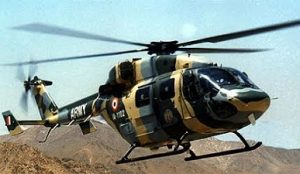 Cheetah/ Chetak Replacement
Cheetah/ Chetak Replacement
The Cheetah /Chetak replacement programme for the army and airforce continues to flounder despite the Government to Government agreement between India and Russia for the supply of 200 Kamov- 226T light helicopters under the Make in India Policy. Presently there is no clarity on as to how this project will move forward and both sides seem to be struggling to meet the challenging ‘Make in India’ requirement of building 50 per cent of the helicopter in India. While the HAL has been designated as the nodal agency for this critical programme along with Russian Helicopters there are a number of complex issues involved which need to be addressed in order to move ahead.
The recent statement of the Russian Helicopters that they are working with HAL to iron out the various contentious issues and that the signing of the contract is likely by year end is a positive development, but its likely transformation into realty seems a distant dream in the current situation. Given the track record of other such crucial Government to Government deals like the army’s M777 Howitzer and the airforce’s MMRCA Rafael projects (Rafael deal has finally been inked after a period of 3 years), the prospect of concluding a contract for the Ka-226T project by end of the year does not inspire much confidence.
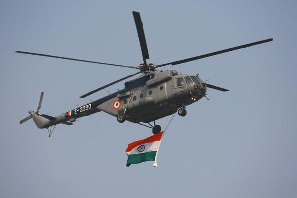 Meanwhile the Recconaisance and Surveillance Helicopter (RSH) programme for 197 helicopters (133 for army and 64 for airforce) continues to be shrouded in uncertainty, with no clarity from the Government on its future, leaving the private industry high and dry. The trials for the 2009 re-tendered RSH project were completed in 2013- in fray were the Airbus AS 550 C3 Fennec and the Russian Kamov Ka – 226T. The decision to cancel this critical project was taken by the MoD in August 2014 after allegations of corruption and technical deviations in the selection process.
Meanwhile the Recconaisance and Surveillance Helicopter (RSH) programme for 197 helicopters (133 for army and 64 for airforce) continues to be shrouded in uncertainty, with no clarity from the Government on its future, leaving the private industry high and dry. The trials for the 2009 re-tendered RSH project were completed in 2013- in fray were the Airbus AS 550 C3 Fennec and the Russian Kamov Ka – 226T. The decision to cancel this critical project was taken by the MoD in August 2014 after allegations of corruption and technical deviations in the selection process.
With the ‘Make in India’ policy in place, a fresh RFI was issued in October 2014 with the aim of identifying probable Indian Vendors including Private Companies forming Joint Ventures (JVs) with Foreign Companies. Indian majors like Tata’s, Reliance, Mahindra, etc. are in fray, looking at JV’s with foreign majors like American – Bell and Sikorsky, Russian – Kamov and European – Airbus Helicopters – some of these companies have already formed JV’s, Mahindra’s with Airbus and Tata’s with Bell. However, with the Government to Government agreement for 200 Ka-226T helicopters signed in Jan this year, the fate of the 197 RSH programme now hangs in balance.
In addition, the HAL is already going full throttle ahead in the development of the Light Utility Helicopter (LUH), which is in the same class as the RSH, to augment the replacement of the Cheetah /Chetak fleet held with the army and airforce . The first flight of the prototype was successfully carried out in July this year and as per HAL’s claims the LUH would be ready for certification by the end of 2017. A total of 184 LUH’s are planned for induction into the army and airforce.
The HAL has also embarked on a project for the development of a limited number of upgraded Cheetah helicopters with a more powerful engine called the ‘Cheetal’ to meet the current Cheetah helicopter shortages and to cater to the arising criticality for high altitude operations. This is a stop gap measure and orders have been placed for only 30 Cheetal’s, 20 for the army and 10 for the airforce – airforce is already flying a couple of these machines.
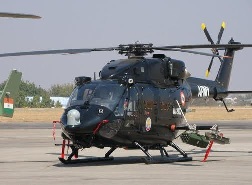 Navy has also been looking to replace its outdated fleet of Chetak/ modified Chetak-MATCH (mid-air torpedo carrying helicopter) with a twin engine, 4.5 ton Naval Utility Helicopter(NUH), capable of operating from warship decks, as well as being armed with rockets/guns and light weight torpedoes. Its earlier tender of 2012 for 56 NUH involving Airbus Helicopters and Agusta Westland was cancelled by the Government in August 2014 and a fresh RFI was issued for 110 NUH on the same lines as that of the RSH programme, based on the ‘Make in India’ policy with Indian private companies collaborating with foreign OEM’s. The platforms under consideration are the Airbus AS 565 MBe, Bell’s 429 and Agusta Westland Super Lynx 300, though Agusta presently is a non -starter due to Finmeccanica’s involvement in the VVIP helicopter scam. It is understood that the Navy and MoD are in the process of issuing a RFP soon.
Navy has also been looking to replace its outdated fleet of Chetak/ modified Chetak-MATCH (mid-air torpedo carrying helicopter) with a twin engine, 4.5 ton Naval Utility Helicopter(NUH), capable of operating from warship decks, as well as being armed with rockets/guns and light weight torpedoes. Its earlier tender of 2012 for 56 NUH involving Airbus Helicopters and Agusta Westland was cancelled by the Government in August 2014 and a fresh RFI was issued for 110 NUH on the same lines as that of the RSH programme, based on the ‘Make in India’ policy with Indian private companies collaborating with foreign OEM’s. The platforms under consideration are the Airbus AS 565 MBe, Bell’s 429 and Agusta Westland Super Lynx 300, though Agusta presently is a non -starter due to Finmeccanica’s involvement in the VVIP helicopter scam. It is understood that the Navy and MoD are in the process of issuing a RFP soon.
Utility Helicopters
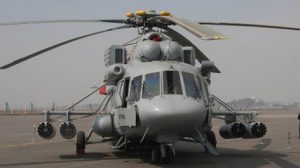 In the utility category, the HAL built ALH (Dhruv) has already entered service with all three services and Coast Guard. The Dhruv has also been test evaluated for high altitude operations with the fitment of a more powerful engine ‘Shakti’ being produced jointly by HAL and French firm Turbomeca. This is a major achievement and will give a boost to helicopter operations in high altitude areas especially Siachen. The induction of the armed version of the Dhruv (Rudra) has already commenced with a unit each currently under raising for the army and airforce – however a major drawback in the Rudra presently is the lack of a suitable anti – tank guided missile in its weapon arsenal. ‘Helina’ the air version of the NAG anti-tank guided missile being developed by DRDO is nowhere on the horizon. Without this capability the Rudra remains a gunship at best.
In the utility category, the HAL built ALH (Dhruv) has already entered service with all three services and Coast Guard. The Dhruv has also been test evaluated for high altitude operations with the fitment of a more powerful engine ‘Shakti’ being produced jointly by HAL and French firm Turbomeca. This is a major achievement and will give a boost to helicopter operations in high altitude areas especially Siachen. The induction of the armed version of the Dhruv (Rudra) has already commenced with a unit each currently under raising for the army and airforce – however a major drawback in the Rudra presently is the lack of a suitable anti – tank guided missile in its weapon arsenal. ‘Helina’ the air version of the NAG anti-tank guided missile being developed by DRDO is nowhere on the horizon. Without this capability the Rudra remains a gunship at best.
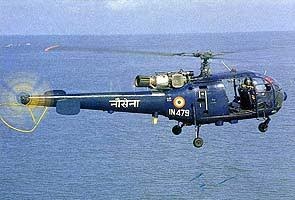 In the medium lift category the air force holds the MI 8 and the MI 17 Russian helicopters. While the MI 8 fleet is in the process of being replaced by MI-17’s, the majority of the existing MI-17 fleet has been upgraded/ refurbished in respect of avionics and night capability. Currently 151 MI-17 V5 helicopters have been acquired from Russia – these helicopters are upgraded versions of the Mi-17’s, with armour plating, glass cockpit, enhanced avionics, night capability and armament package. Some of these helicopters have been further modified for VVIP tasks. As per reports the airforce is looking at acquiring another 48 x Mi-17V5 helicopters in the near future.
In the medium lift category the air force holds the MI 8 and the MI 17 Russian helicopters. While the MI 8 fleet is in the process of being replaced by MI-17’s, the majority of the existing MI-17 fleet has been upgraded/ refurbished in respect of avionics and night capability. Currently 151 MI-17 V5 helicopters have been acquired from Russia – these helicopters are upgraded versions of the Mi-17’s, with armour plating, glass cockpit, enhanced avionics, night capability and armament package. Some of these helicopters have been further modified for VVIP tasks. As per reports the airforce is looking at acquiring another 48 x Mi-17V5 helicopters in the near future.
In the heavy lift category there is nothing worthwhile held with the Indian Military, barring a few Russian MI 26 helicopters whose high altitude capability is poor. Based on the army’s requirement of a suitable helicopter capable of lifting under slung the Ultra-Light Howitzer M777, being acquired from the United States for deployment in mountains, the process for acquisition was set into motion. Trials for the same have been completed with the American Chinook CH 47 scoring over the Russian MI-26- Fifteen numbers have been cleared for induction with the likelihood of another six in the future.
Specialised/Attack Helicopters
The weakest Link is in the Indian Military inventory is the holding of specialized helicopters like the attack and anti-submarine warfare (ASW). The MI 25/MI 35 attack helicopters held are vintage and require replacement on priority. Even the Sea king ASW helicopters held with the navy need upgrade/ replacement with a state of art modern ASW helicopter. In the trials conducted for acquisition of attack helicopters the American Apache Longbow has been selected over the Russian MI-28 (Havoc). The induction of 22 Apaches Block III (Latest Upgraded Version) is likely to commence this year end or early next year. The army has also put in its requirement for 39 Apaches Block III for its three Strike Corps – in principle approval for the same was given by the last Government, but under the present circumstances its future seems to be uncertain.
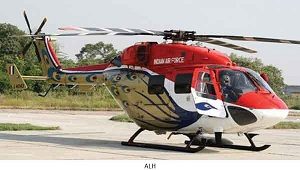 The Navy had also conducted extensive trials for replacement of its multirole Sea king fleet (the Naval Multirole Helicopter Project- NMRH) with the European NH-90 and American Sikorsky S- 70B in fray. However, the NH 90 also became a co-lateral damage of the VVIP scandal, as Finmeccanica is part of the European Consortium manufacturing the NH-90. After dillydallying on this project since Dec 2014, the Defence Acquisition Council finally cleared the acquisition of 16 Sikorsky S- 70B helicopters, out of a total requirement of 123 NMRH by the navy.
The Navy had also conducted extensive trials for replacement of its multirole Sea king fleet (the Naval Multirole Helicopter Project- NMRH) with the European NH-90 and American Sikorsky S- 70B in fray. However, the NH 90 also became a co-lateral damage of the VVIP scandal, as Finmeccanica is part of the European Consortium manufacturing the NH-90. After dillydallying on this project since Dec 2014, the Defence Acquisition Council finally cleared the acquisition of 16 Sikorsky S- 70B helicopters, out of a total requirement of 123 NMRH by the navy.
In this context the development of the Light Combat Helicopter (LCH), stated to be a state of art attack helicopter with capability to operate in the mountains by HAL is very significant. The LCH uses the technology of the existing Dhruv and its configurations, except that the fuselage is suitably modified and streamlined for tandem seating required for a modern day attack helicopter.
An indigenous attack helicopter is a step in the right direction as it has been tailored to suit the terrain and climatic conditions of our area of operations – its ability to operate in the mountains is a major achievement. As per reports the LCH is likely to get certification by early next year and will be ready for induction by end of 2017, but the drawback in terms of a suitable anti-tank missile remains. Both air force and army are the potential customers for induction of the same.
From the above it is evident that the Indian Military continues to be saddled with old, vintage and archaic helicopters despite an urgent need to replace them due to security and operational imperatives. Despite numerous trials conducted in the last decade there has been no forward movement in the replacement /new acquisition of helicopters for various reasons, the main being lack of decision making by the politico-bureaucratic combine and apathy to matters military and national security. This attitude has somewhat changed with the thrust of the Modi Government on Make in India and the foray of the private sector into defence and aerospace sectors.
With this thrust it is hoped that the state of helicopters with the military will improve in the coming years both in quality and quantity. The good news is that the HAL helicopter projects though delayed, are on track. Both the crucial projects of LUH and LCH are likely to fructify next year and the Dhruv has stabilised after about 11-12 years of operations – there are approximately 100 plus Dhruv’s operating with the Indian Military and many more are expected to be part of the inventory in coming years.
The problem however lies in the capability to manufacture these different types of helicopters in such large numbers. For this the involvement of private industry in helicopter development needs to be encouraged by the Government in order to not only stop the monopoly of HAL, but ensure greater competition in the market. There is an urgent need to develop a collaborative approach towards developing helicopter manufacturing base in the country for using the strengths of both the public and private sector towards fulfilling national aspirations and urgently meeting the critical helicopter requirements of the Military.
Lt Gen BS Pawar is a Delhi based defence analyst, former Head of the Army Aviation Corps and Commandant School of Artillery. The views in the article are solely the author’s. He can be contacted at editor.adu@gmail.com.









